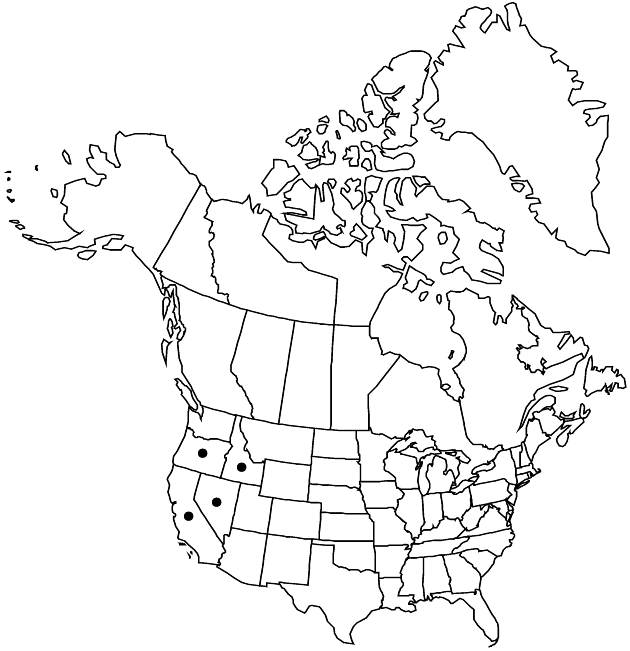Erigeron bloomeri
Proc. Amer. Acad. Arts 6: 540. 1865.
Perennials, 4–15 (–20) cm; taprooted, caudices branched. Stems (usually white-indurate at bases) erect to slightly basally ascending, glabrous or densely white-strigose, eglandular. Leaves mostly basal (persistent); blades linear, 20–70 (–90) × 1–2 (–3) mm, cauline reduced (on proximal 1/8–1/2 of stems, bases white-indurate, usually thickened) margins entire, faces glabrous or strigose, eglandular. Heads 1. Involucres 5–10 × 7–10 mm. Phyllaries in 2–3 series, strigose to villoso-hirsute or villous, minutely glandular to eglandular. Ray (pistillate) florets 0. Disc corollas 4.5–7 mm. Cypselae (2.5–) 3–4 mm, 2-nerved, glabrous proximally, faces sparsely sericeous on distal 1/3; pappi: outer of setae, inner of 25–40 bristles.
Distribution

Calif., Idaho, Nev., Oreg.
Discussion
Varieties 2 (2 in the flora).
Selected References
None.
Key
| 1 | Stems and leaves strigose to puberulo-hirsutulous; phyllaries densely strigose to hirsute or hirsuto-villous, minutely glandular | Erigeron bloomeri var. bloomeri |
| 1 | Stems and leaves glabrous or sparsely strigose; phyllaries glabrous, usually sparsely minutely glandular, sometimes eglandular | Erigeron bloomeri var. nudatus |